OCULUS QUEST 2 REVIEW: BETTER, CHEAPER VR
The Quest 2 is a self-contained headset is an update to Oculus’ 2019 Quest. Oculus has kept that standalone Quest design with the same feature set, while improving its screen, reducing its weight, and — with one noteworthy caveat — making it more comfortable. It’s also dropped the starting price for the Quest 2 one of the lowest-priced headsets on the market.
The Quest 2 is everything we liked about the original Quest at launch but with the benefit of a stronger ecosystem that’s developed over the past year. Even with current-generation VR’s inherent awkwardness, it feels like a final product rather than an early-adopter experiment. Oculus — a company owned by social giant Facebook — has done some of its best work so far. It’s also provoked some of the biggest questions yet about VR’s future.

Oculus Quest 2: Design and comfort
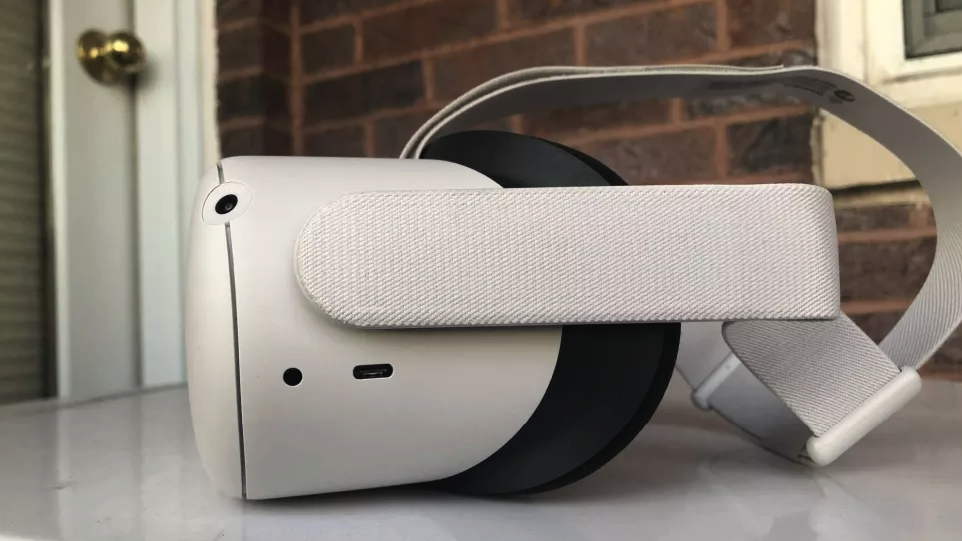
The Oculus Quest 2 is an adorably sleek piece of tech. Ditching the plain black of its predecessor and coming in at 10% lighter, the Quest 2’s light gray design highlighted by a black face strap and a quartet of camera sensors make it look simple, fun and inviting all at once.
The headset’s sparse, smartly placed button and port layout help maintain its seamless design. You’ll find a power button on the right side of the headset, a volume rocker on the right underside, and a USB-C port and headphone jack on the left for charging and audio. You can now adjust the lenses’ spacing with three different viewing settings by pinching them or spreading them out manually right within the inside of the headset, eliminating the need for the switch that sat at the bottom of the original Quest.
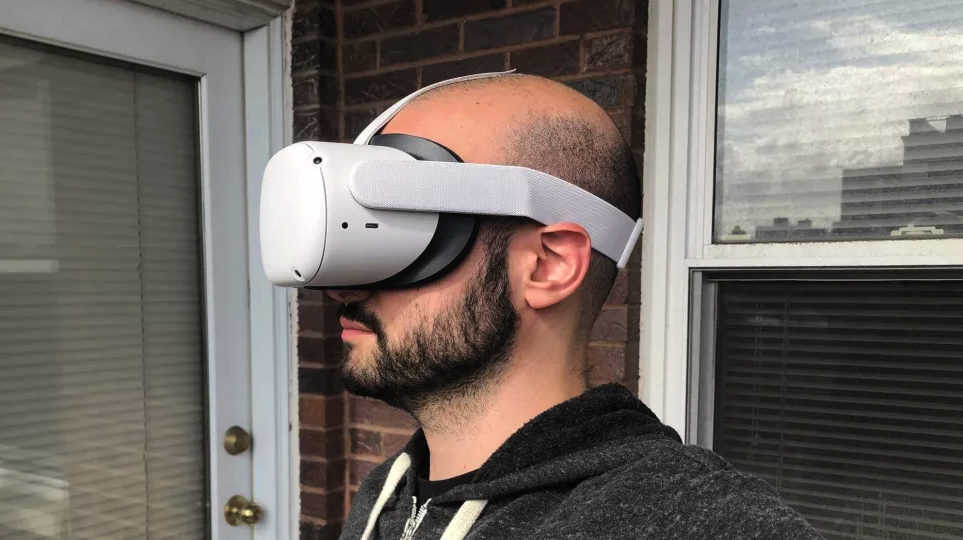
At a compact 91.5 mm x 102 mm x 142.5 mm (strap folded in), 191.5 mm x102 mm x 295.5 mm (strap fully opened up), with the weight of 503g, the Oculus Quest 2 felt lightweight and comfortable, even when you spent more than an hour at a time in VR. A generous amount of foam padding made it easy to forget you had a hunk of plastic strapped to your face, while the headset’s adjustable elastic bands allow you to find the right fit for your head.
Oculus Quest 2: Getting started

Like the original Quest, the Oculus Quest 2 is an all-in-one VR system that doesn’t require you to set up any external sensors or cameras — everything you need is right in the headset. The setup process only takes a few minutes; you’ll put the headset on, activate your account via the Oculus mobile app, establish your play area, and you’re good to go.
The Quest 2 once again uses Oculus’ Guardian system, which lets you sketch out a playspace with your Oculus Touch controllers to avoid bumping into walls and furniture. Creating your Guardian space is as simple as virtually painting a rectangle in your living room, which you can clearly see thanks to the headset’s Passthrough+ cameras. The Quest 2’s Passthrough+ mode is designed to reduce the depth disparity found in other passthrough cameras.
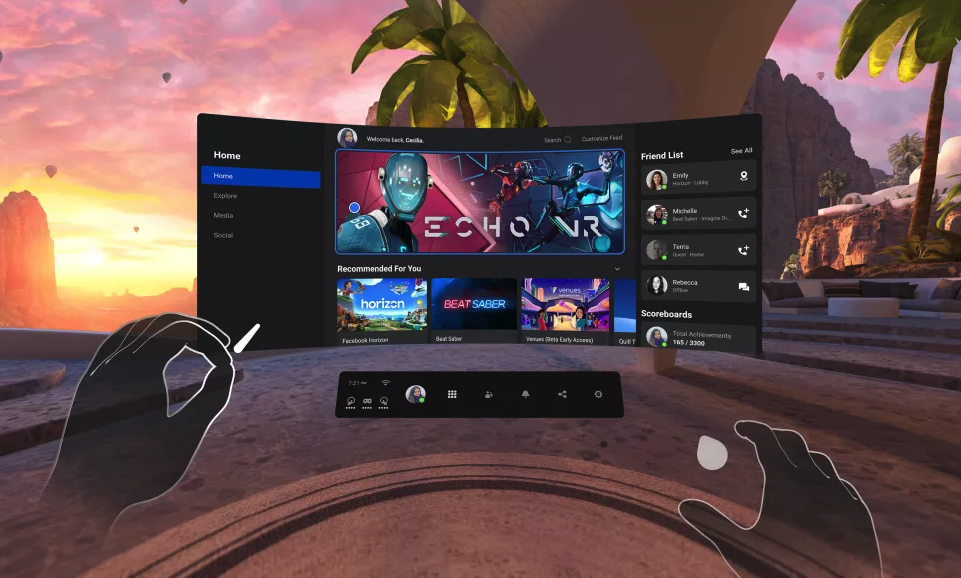
The headset will automatically switch to Passthrough mode if you leave your Guardian boundary, allowing you to instantly see any surroundings you might come into contact with. There’s also an optional ability to toggle Passthrough mode with a quick tap on the side of the headset, which is handy for when you want to check in on the real world every now and then.

Oculus recommends having a 2m x 2m space for room-scale VR, which allows you to freely walk around a virtual space for more active experiences. Don’t have a ton of space to play with? You can also establish a stationary boundary for playing VR while sitting or standing in a single spot.
One important note for people in China: You’ll eventually need a Facebook account to use the Oculus Quest 2. According to Oculus’s latest policies, all-new Oculus users will have to log in via Facebook. Existing users have until the start of 2023 to use just their Oculus accounts; after that, they’ll have to merge their Oculus and Facebook accounts. This means you need to be able to access Facebook to log in to your Oculus. With Facebook being blocked this can be a problem for users from China.
Controllers and hand tracking
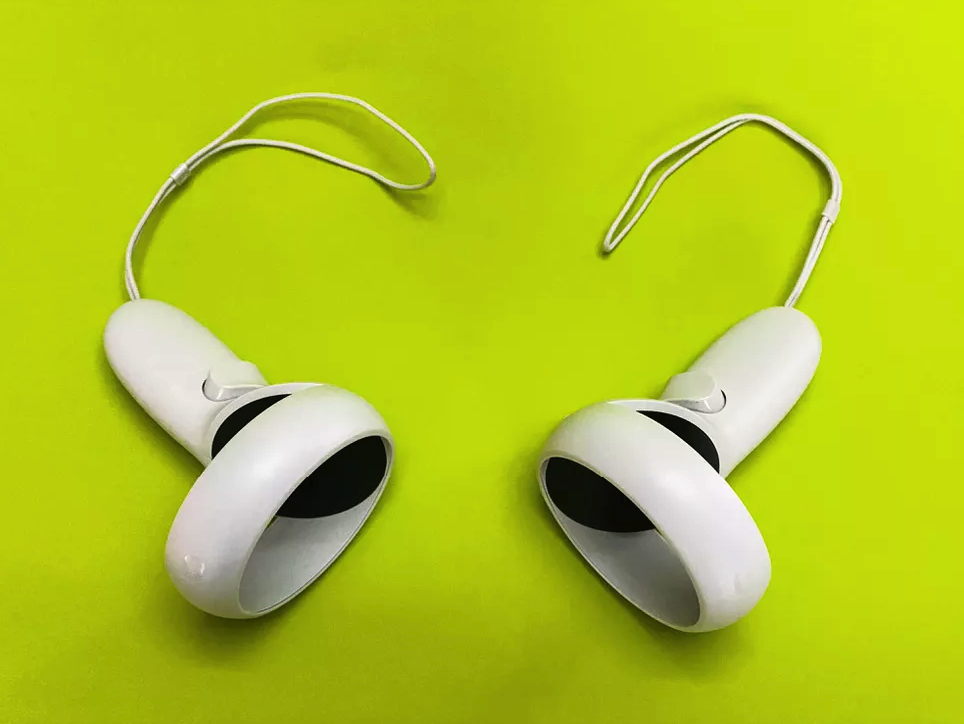
The Quest 2 features a redesigned version of the Oculus Touch Controllers built to deliver better gesture tracking. The setup is largely the same as before: each of the scoop-shaped controllers feature two shoulder buttons for doing things like firing weapons and grabbing objects, with clickable analog sticks and a pair of face buttons on each controller. You’ll also want to use the included wrist straps to make sure they don’t go flying in the middle of a tense lightsaber fight.
The snappy triggers and accurate motion sensing allow you to snag easy headshots in Pistol Whip, and you will have no trouble hacking away at color-coded blocks during the rhythm-action of Beat Saber. The controllers’ haptics is also impressive, as they allow you to feel the distinct buzz of an ignited lightsaber during Vader Immortal while keeping me on track in Tetris Effect with a subtle pulse that matched the in-game music.
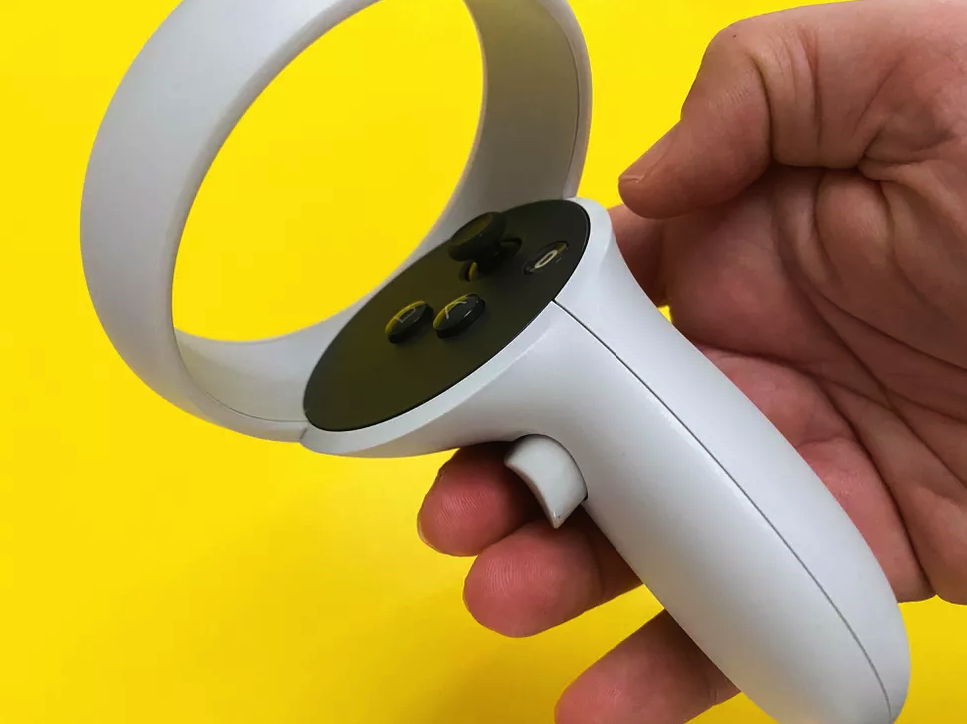
Touch Controllers run on AA batteries and aren’t rechargeable via USB. The controllers are rated to offer around 30 hours of juice on a single battery.
The Quest 2 also offers hand tracking, allowing you to navigate the headset’s menus and play select games using your hands alone. There are currently only a handful of Quest apps that support hand tracking, and the feature was finicky at best in the ones that are being featured.
Oculus Quest 2: Games and Apps

he Oculus Quest platform has amassed an impressively solid game lineup that runs the gamut from new takes on established AAA franchises to exciting indie titles that make full use of the VR medium.
Highlights include rhythm-slashing game Beat Saber and the immersive time-bending shooting of Superhot VR, the latter of which made me feel like I was in a trippy sci-fi action movie as I controlled time and threw bullets back at enemies.

The Quest 2 also excels as a multiplayer machine, allowing you to play in virtual spaces with friends at a time when gathering in-person is more difficult than ever. Beating up bad guys in VR brawler Path of the Warrior with a friend is one of the most hilarious and fun multiplayer experiences I’ve had in a long time, and Eleven: Table Tennis VR did an admirable job translating my poor table tennis skills to the virtual world.
You can augment the Quest 2’s game library even further with the Oculus Link cable, which lets you connect your Quest to a VR-ready PC and play an even larger range of VR titles including Half-Life: Alyx, Star Wars Squadrons, and Fallout 4 VR. While it’s a bummer that some of the best VR games out there aren’t available on Quest 2 out of the box, the Oculus Link effectively turns your Quest into an Oculus Rift for slightly less than the Rift’s asking price.
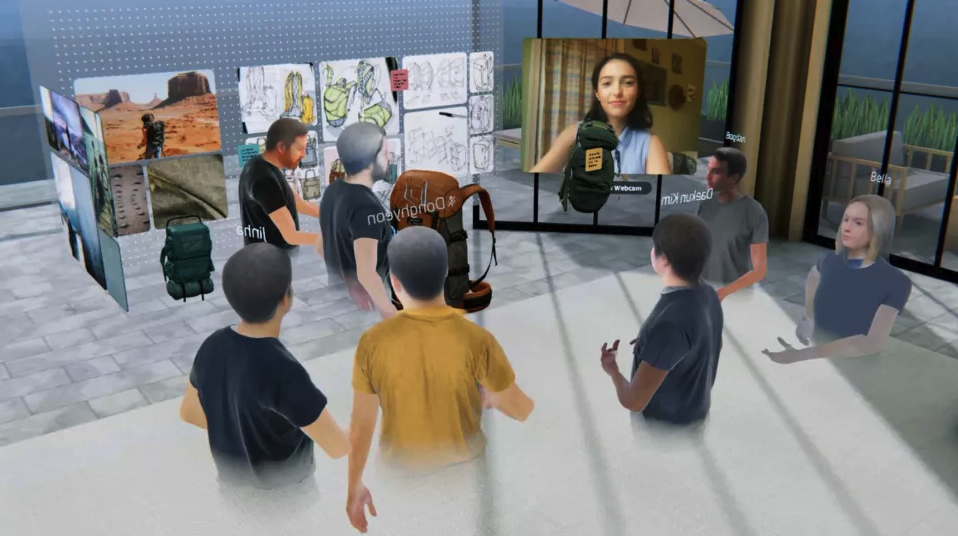
The Quest 2 is much more than a gaming device, with a healthy selection of entertainment and productivity apps that let you watch videos and collaborate with others in cool ways. You can look around in awe as you virtually stand at the top of Mount Everest in a 360-degree YouTube VR video, and surrounded by the mesmerizing percussion of the Blue Man Group when watching their virtual concert in the Oculus TV app.
Oculus’ TV app also lets you ride a virtual rollercoaster, which will give you adrenaline surges. The Spatial app provides an impressively robust virtual workspace for collaborating on documents and 3D models. Meanwhile, the Virtual Desktop app allows you to use Windows 10 PC in an immersive VR environment.
Oculus Quest 2: Verdict
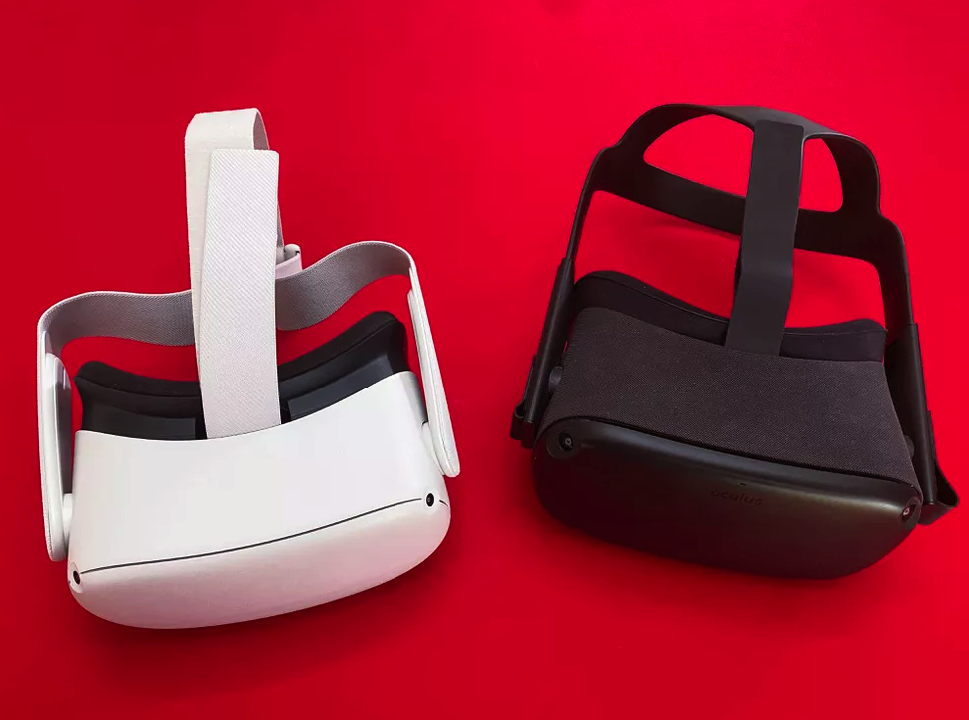
The Oculus Quest 2 has joyously simple magic to it that reminds you of the first time when you picked up a Nintendo Switch or an iPhone. Like its predecessor, the Quest 2 eliminates the previous hurdles of getting into virtual reality — namely the need to have a powerful PC and tons of wires and sensors — and packs a ton of great experiences into a sleek device that you can pop on at a moment’s notice.
If you already own an Oculus Quest, the improved design and performance alone might not sway you to plunk down for Quest 2. And the new headset can get costly if you factor in the price of an Oculus Link cable or the optional 256GB model. But if you’ve yet to dive into VR or want to finally go untethered, the Oculus Quest 2’s price, game library, and overall ease of use make it the best entry point into virtual reality yet — and the perfect escape from lockdown monotony.
To learn more about Oculus Quest 2’s Price and Availability Click the link below:














